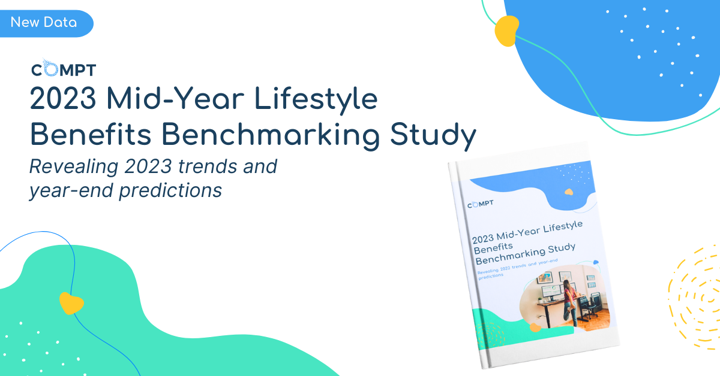
Bias in the recruitment process is one of the many challenges facing organizations today. While some hiring managers have advocated limiting human input and incorporating AI during recruitment, these have not made organizations immune to unconscious bias.
Unconscious biases are unavoidable attitudes or stereotypes humans have towards other people based on race, gender, age, education, or another thing else. These underlying attitudes can present adverse hiring outcomes for an organization and distinct groups of people.
As calls to increase diversity and inclusivity in the workplace increases, entrepreneurs who want to grow their business by improving diversity and inclusivity need to ensure unconscious bias does not stand in the way of their growth goals.
In this post, we will dive into ways of reducing unconscious bias while hiring.
But first, why is reducing unconscious bias important?
- Promotes creativity: Diversity and inclusion are good for a business because an inclusive workforce is more innovative than non-inclusive teams.
- Improve your bottom line: Studies show that having a diverse workforce may lead to higher profits for the firm than homogenous teams.
- Find the right talent: a diverse workforce attracts a broader pool of talent as more people would want to work for that firm.
As an e-commerce business that has grown our customer base by 147% since the start of the pandemic, we understand what hiring the right people means - and reducing unconscious bias is a key factor.
Six ways to reduce unconscious bias while hiring
Before you go about reducing unconscious bias in the recruitment process, it is important to get familiar with the biases you face and their effects. Is it racism, sexism, or ageism? That way, you can implement the right procedures to eliminate it.

1. Vary where you look for talent
If you have been trying to reach your diversity goals or reduce biases when looking for talent but are not succeeding, maybe it is time to review where you source for talent.
This can be as simple as changing where you advertise for job vacancies in your organization. Suppose you have been using the same portal or recruitment platforms when announcing job opportunities in your organization.
In that case, you may try other avenues like social media or community forums next time.
While doing so, avoid niche sites that may be specific to your industry. You can also change search parameters to capture not only those with particular job skills but also those with transferable skills that can be taught.
2. Educate the hiring team
Your employees or hiring team may not even spot unconscious bias. Hence, they would hire an individual based on their instinct. To prevent such an occurrence, educate your team using training videos and the hiring personnel on unconscious bias, plus the methods of identifying it.
Your training should help your team understand the problems caused by unconscious bias on the onset so that the hiring team avoids using their perception when hiring a candidate but the right performance indicators.
Once your team acknowledges bias and identifies ways to eliminate it, they will hire for skills and not because a candidate is fit.
3. Implement diversity goals
It is a known fact that most hiring processes are usually discriminatory against blacks, women, and minorities. Employers should, therefore, develop diversity goals if they want such groups in their organization. These diversity goals need to be understood by every employee and implemented throughout the organization.
To set the right diversity goals, analyze what you have at your disposal. If you have fewer women in management or leadership roles, then one goal will be to hire more women to improve their representation in these positions.
You can encourage women and diverse communities to apply to job opportunities or make known you are looking for women or candidates from minority backgrounds.

4. Adopt a standard interview process
If your business lacks a standard recruitment process, an applicant's chance of experiencing discrimination would be very high. Hence, adopt or use structured interviews or a predefined set of questions when interviewing applicants. Never allow the hiring team to develop their own set of questions as they may introduce bias.
When creating questions, avoid loose or unstructured questions, which may cause hiring a candidate based on personal likeness instead of being best for the job. Alternatively, you can develop a hiring scorecard for determining whether a candidate will be successful in an upcoming position as vpnAlert's editor-in-chief notes.
"When we look for new writers, we often use a scorecard to log the performance of potential candidates. This simple technique really helps us to remove bias in hiring. We can easily then compare the candidates based on their outcome and different parameters." says Bram Jansen, Chief Editor of vpnAlert.
The biggest advantage of structured interviews or scorecards is it helps predict job performance besides reducing bias and likeability.
5. Find an external recruitment agency
An external recruitment agency is ideal where you find bias is deep-rooted in the organization, or your hiring team is reluctant to eliminate it.
While you would still have the last say on who you hire, the advantage of outsourcing to an external agency is that you get different sets of applicants. To ensure an efficient working relationship with a recruitment agency, make them understand your hiring goals and not to present non-inclusive candidates.
6. Use inclusive language in your job descriptions
Do you know that the way you structure or write your job advert can affect your hiring process and the candidates applying for the job? Yes, your words can either attract or discourage people from applying for a job opportunity with your organization.
To avoid leaving off a large pool of potential candidates, ensure your virtual assistant or the person responsible for writing the job description doesn't use gender, age, or any other restrictive words in the job descriptions.
Words like "Policeman," "stewardess," or "rockstar" may deter some candidates from applying for a job. Therefore, use the right language and make your job description as inclusive as possible to gather a large pool of applicants.
Conclusion
Unconscious bias can manifest itself in several ways during the recruitment and even across various departments in an organization.
But that may not mean it cannot be prevented or stopped. Brands must first recognize the bias they face if they want to limit unconscious bias in their organization and from recurring.
This may require heavy and constant investments in monitoring and evaluation of your team. Despite that, the returns are very generous because eliminating unconscious bias is good for both a business and the employees as it introduces a fair hiring process and reduces the possibility of having a homogenous team or one that will not thrive in the job.
Provide your team with inclusive benefits that fits a diverse workforce. Download the free benchmark report of the top ten work perks that attract talent.

About the author:
Hanson Cheng is the founder of Freedom to Ascend. He empowers online entrepreneurs and business owners to 10x their business and become financially independent. You can connect with him here.
